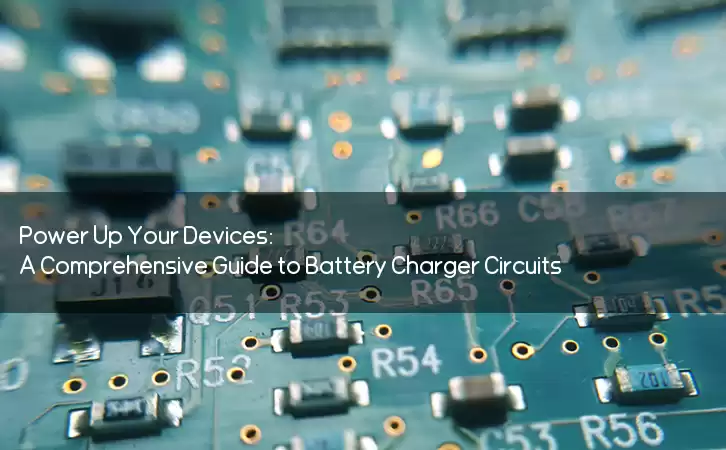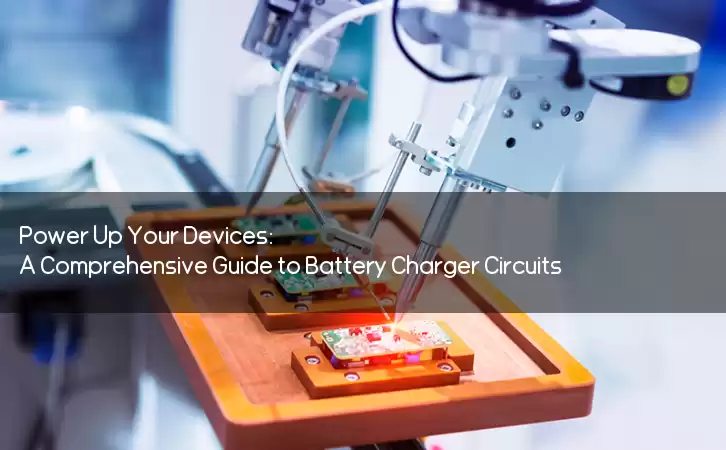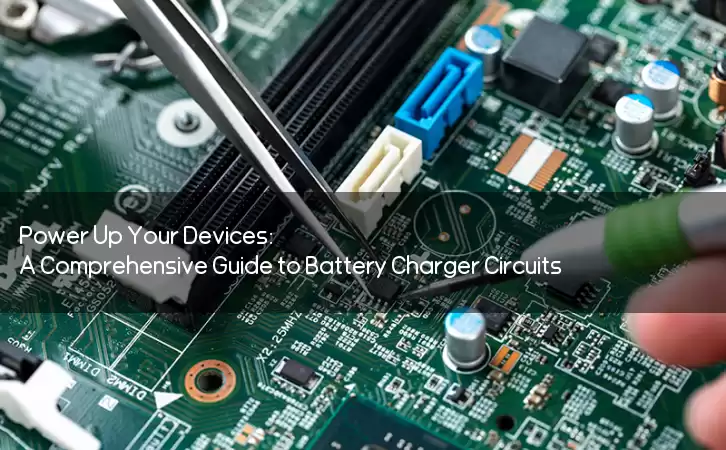Information Center
Power Up Your Devices: A Comprehensive Guide to Battery Charger Circuits
Published:2023-08-30 00:32:55 Author:Green WCND Views:129Battery Charger Circuit: Overview and Design Considerations

With the growing use of portable or battery-operated devices such as smartphones, laptops, MP3 players, and toys, the demand for effective and efficient battery chargers has also increased. A battery charger circuit is an electronic device that converts AC or DC input voltage into a regulated DC output voltage that can charge a rechargeable battery. In this article, we will provide an overview of battery charger circuit design and discuss some important factors that affect its performance.

Types of Battery Charger Circuits

There are two main types of battery charger circuits, namely, linear and switched-mode. Linear battery charger circuits are simple, low-cost, and suitable for small batteries. They use a linear regulator to regulate the input voltage to the desired output voltage and directly charge the battery. However, they have poor efficiency, generate heat, and may not be able to charge high-capacity batteries.
Switched-mode battery charger circuits, on the other hand, are more complex, but have high efficiency and can charge a range of battery types and sizes. They use high-frequency switching converters or controllers to vary the output voltage and current to match the requirements of the battery being charged. They may also include features such as current limiting, temperature sensing, and overvoltage protection. Switched-mode battery charger circuits are commonly used in mobile phones, laptops, and electric vehicles.
Design Considerations for Battery Charger Circuits
Designing a battery charger circuit requires careful consideration of several factors such as voltage and current regulation, battery type and capacity, charging rate, and safety features. Here are some important design considerations for battery charger circuits:
1. Voltage and current regulation: The charger should regulate the output voltage and current to the battery within its safe operating limits. Typical charging voltages for lead-acid, nickel-cadmium (NiCd), and lithium-ion (Li-ion) batteries are 2.4V-2.5V/cell, 1.4V-1.5V/cell, and 4.2V/cell, respectively. The charging current should also be limited to prevent overcharging and battery damage.
2. Battery type and capacity: Different battery chemistries such as lead-acid, NiCd, NiMH, and Li-ion have different charging characteristics and requirements. The charger should be designed to match the battery type and capacity to ensure optimal charging performance. For example, Li-ion batteries require constant-current charging followed by constant-voltage charging with a gradual reduction in current.
3. Charging rate: The charging rate determines how fast the battery can be charged without overheating or degradation. The charging rate should be within the manufacturer’s recommended limits, which depend on the battery type, capacity, and temperature. Fast charging may reduce the battery’s lifespan, while slow charging may take too long.
4. Safety features: The charger should include safety features such as overcurrent protection, overvoltage protection, short-circuit protection, temperature sensing, and reverse polarity protection to prevent damage to the battery or the charger and avoid the risk of fire or explosion.
Conclusion
Designing a battery charger circuit requires knowledge and experience in electronics and battery technology. The choice of circuit topology, components, and features depends on the specific application and requirements. A well-designed battery charger circuit can improve the performance and lifespan of the battery and ensure safe and reliable operation.
Power Adapter Design and Customization Guide for Portable Electric KettlesI. Common Design Types for Portable Electric Kettle Power AdaptersPortable electric ke···
I. Common Design Types of Power Adapters External Independent Type (Most Common) Design: A standalone adapter (e.g., "black brick") connected to the p···
Handheld Vacuum Cleaner Power Adapter Selection GuideIntroductionHandheld vacuum cleaners have become a mainstream tool for household cleaning due to their port···
Drill Power Adapter Selection Guide.drill-container { font-family: Arial, sans-serif; line-height: 1.6; max-width: 800px; margin: 0 auto; padding: 20px; } .dril···





